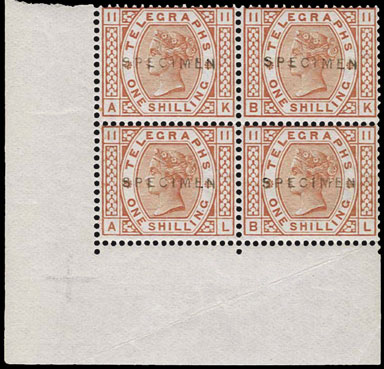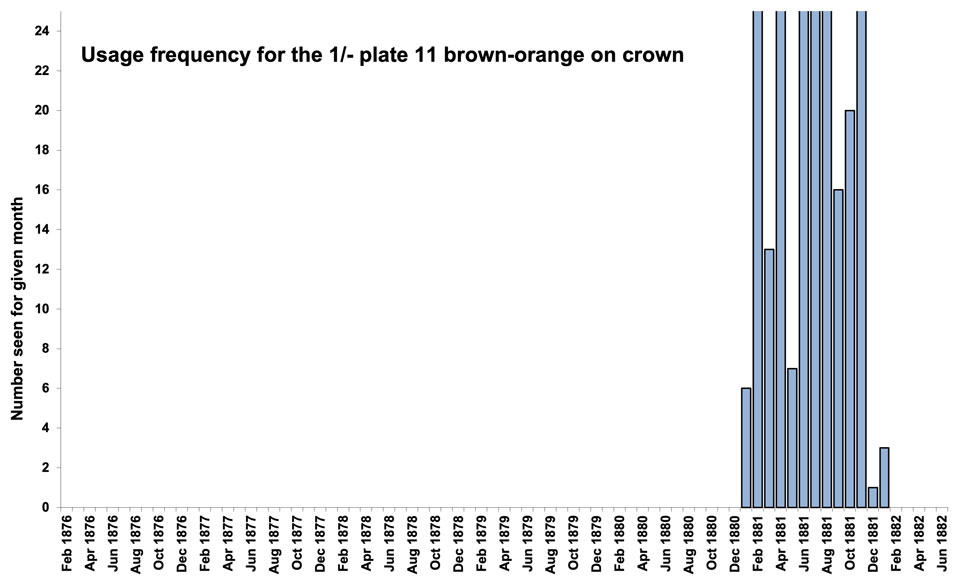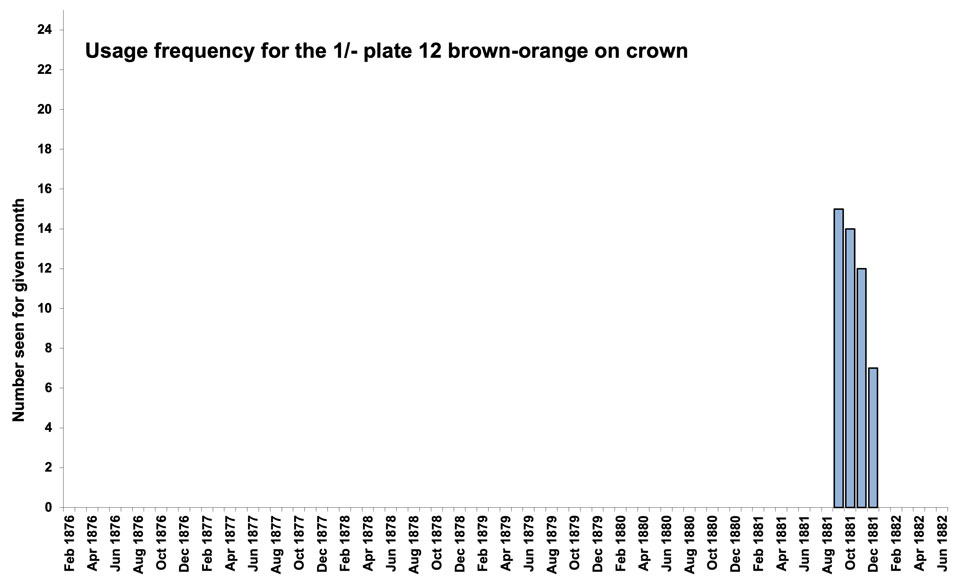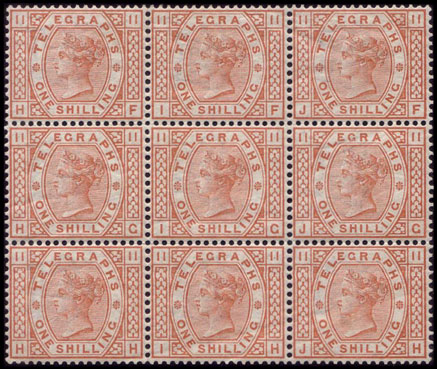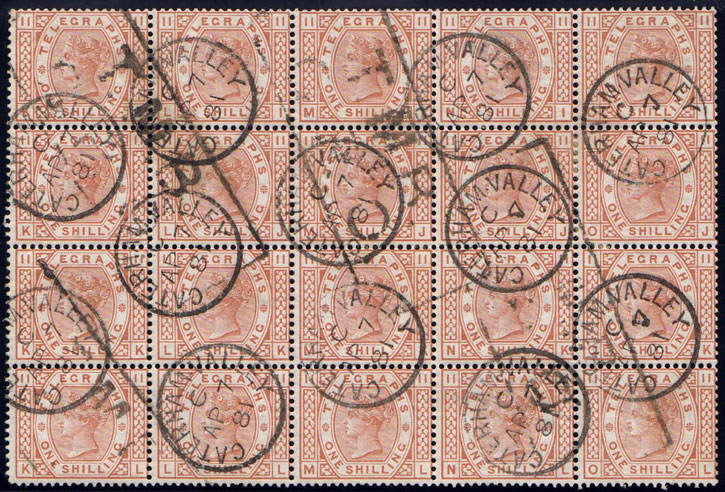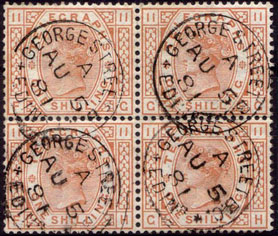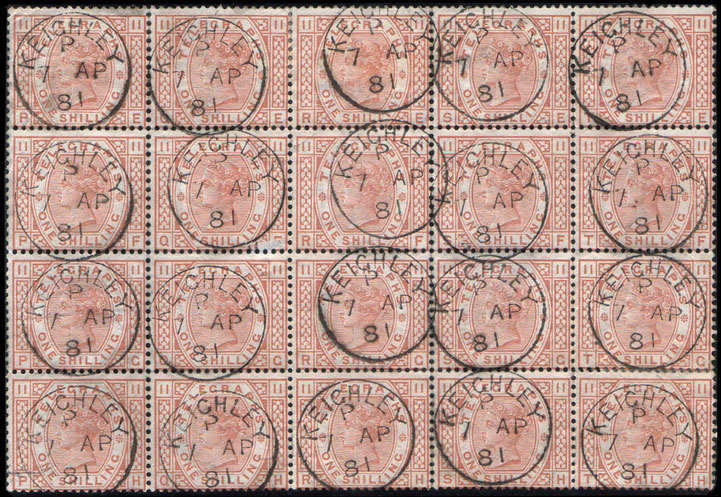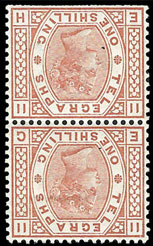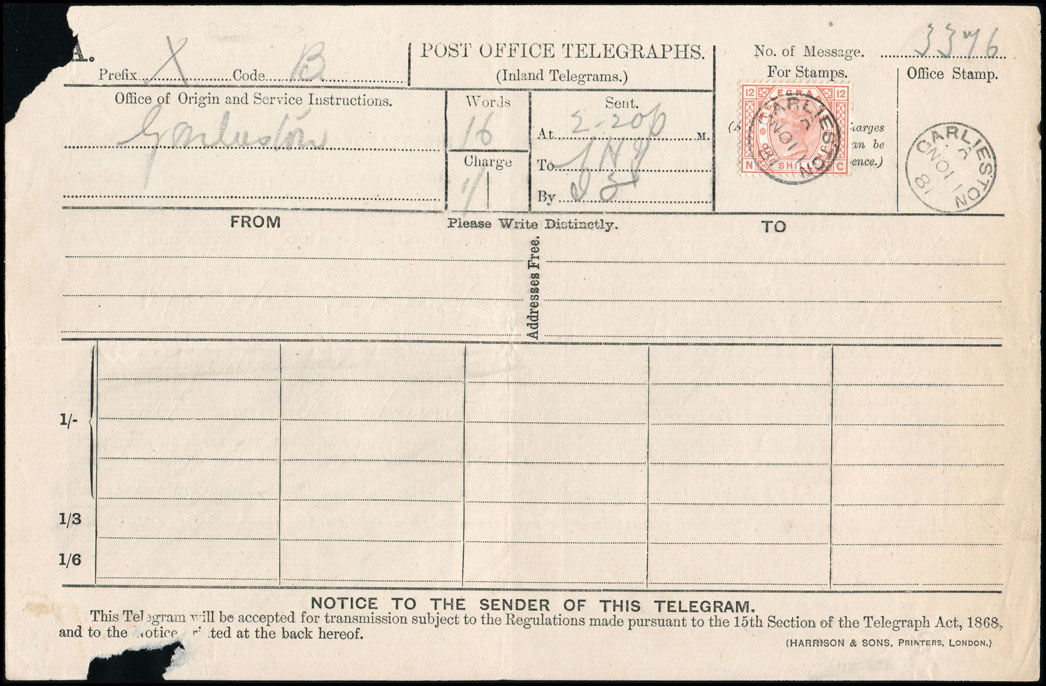1 Essays
2 Die Proofs
3 Sheet Layout
4 Plate Proofs
5 Paper
6 Imprimaturs
7 Colour Standards
8 Specimens
9 Issued Stamps
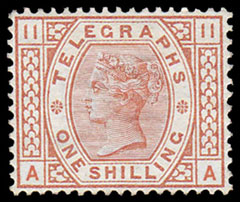
Date: Jan 1881
Plates: 11-12
Printer: De La Rue
Watermark: Crown (sideways)
Perforation: 14
In 1880 the Post Office decided to use one kind of paper for most standard sized postage and telegraph stamps. Imperial Crown paper was used upright for postage stamps starting with the 1880 “Provisional” issue, and hence sideways for telegraph stamps. The 3d, 6d, 1s, and 3s plates were altered to fit the new layout, and re-registered sheets were endorsed “Proof after alteration of Plate”. Since these were altered plates, there are no essays or die proofs. New telegraph stamps were issued in 1881.
Sheet Layout
The sheet had 240 stamps in two panes, arranged horizontally. Each pane had 120 stamps in 12 rows of 10. The margins had division ornaments, two hexagons between the panes and two half hexagons in the top, bottom, and side margins, marking the division into Post Office sheets of 20 stamps. There were no plate or current numbers. At the middle of each side was a small “T” used as a perforating guide.
The black proof sheet of plate 12 in the British Library has no division ornaments. It is dated 6 Aug 1881, a week before the stuck/approved date of 13 Aug 1881 given by Wright & Creeke. However, an imprimatur in the Langmead Collection lettered ‘AH’ shows part of a division ornament. It seems that the ornaments were initially omitted from plate 12 but added before going to press.
A Post Office sheet was 20 stamps, valued at one pound.
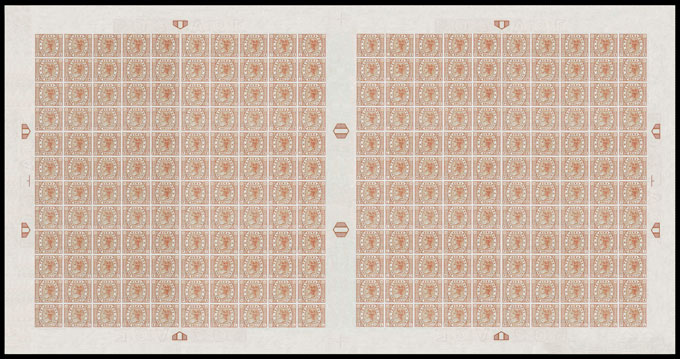
Computer generated image, click to enlarge.
Plate Proofs
There are no plate proofs for the altered plates.
Paper
From 1881, plates 11 and 12 were printed on Crown paper.
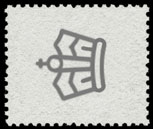
The watermark as seen from the front of the stamp.
For more details on Crown paper click here.
Imprimaturs
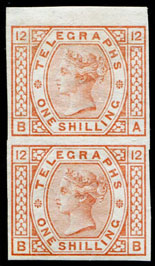
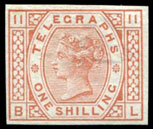
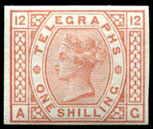
Plate 11 was re-registered on 10 Feb 1881, plate 12 on 13 Aug 1881. Plate 11 has watermark sideways-inverted. Plate 12 vertical pair BA-BB has been incorrectly described as “imperforate — not from the imprimatur sheet”.
Both sheets were endorsed “Proof after alteration of Plate.” and
“Ordered that this altered Plate be brought into use.”
The registration sheets for the Telegraphs have been lost. However, we can reconstruct them from known examples and a clear pattern emerges. Most have a column of 12 taken, plus four from the adjacent column, and a plate number example from the opposite corner. One sheet of each value has an extra column of 12 taken.
Plate 12 was missed in both the 1889 and 1890 removals, giving two less than the expected 29. Two pairs remain intact: Plate 12 BA-BB and BC-BD.
Red represents an institutionalised example.
Green a known example in private hands.
Blue is unknown but predicted by the pattern.
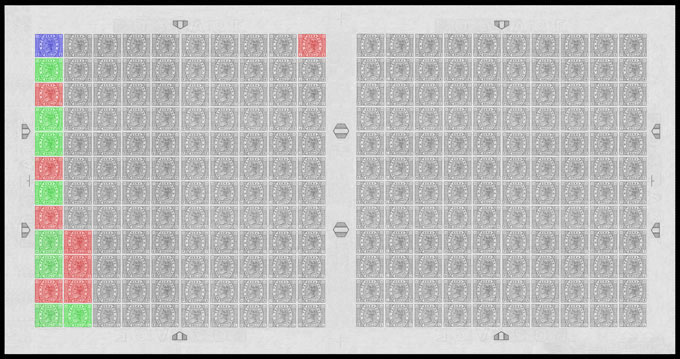
| Institutionalised/Total: | 8/17 |
| Royal Philatelic Collection: | BJ, JA |
| British Postal Museum: | BI, BK |
| Tapling Collection: | AH |
| Langmead Collection: | AK |
| Phillips Collection: | AC, AF |
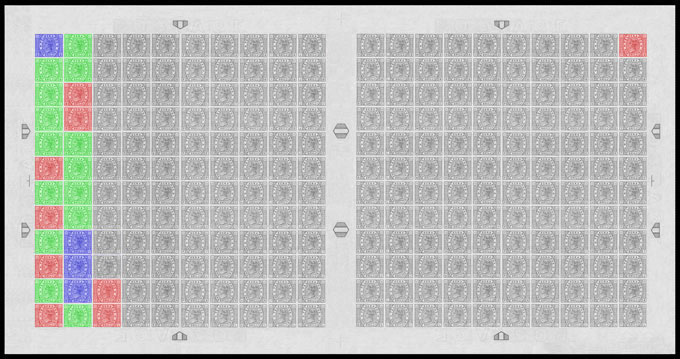
| Institutionalised/Total: | 9/27 |
| Royal Philatelic Collection: | CL, TA |
| British Postal Museum: | CK |
| Tapling Collection: | AJ |
| Langmead Collection: | AH, BC-BD |
| Phillips Collection: | AF, AL |
Colour Standards
There are no known 1s colour standards on Crown paper, but perhaps the six Type 12 specimens described below could be colour standards under “the 1880 system” (see Wiseman Vol. 1, pp. 99-100).
Specimens
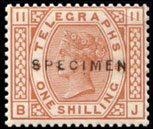
Plate 11 Type 12: rare, a corner marginal block AK-BL and 2 singles (split from AJ-BJ) are known.
Click the image to enlarge.
Reference to scarcity, blocks and the number of sheets or panes so treated is derived from reconstructions of known examples within our database.
Issued Stamps
Stamps were issued from plates 11 and 12.
The usage frequency graphs show that plate 11 was used from Jan 1881 and then plate 12 from Sept 1881.
Click the graphs to enlarge.
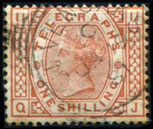
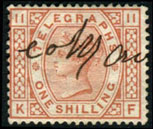
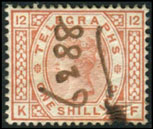
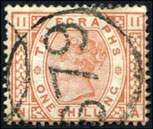
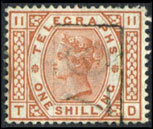
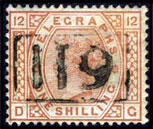
Issued Stamps — Plate 11
Plate 11 (current no. 589) was registered on 13 May 1880 in green. It was re-registered on Crown paper on 10 Feb 1881 in brown-orange.
Scarcity #12 in mint telegraphs, #11 in used telegraphs.
The watermark on this plate is more common sideways-inverted. Of 93 examples to hand, 4 are sideways and 89 are sideways-inverted, or approximately 5% sideways and 95% sideways-inverted. We therefore show sideways-inverted examples as upright images, and sideways as inverted images.
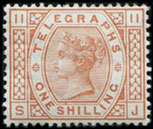
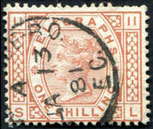
Mint stamps are more common than their catalogue value suggest. Mint multiples are rare with one pair, a block of four, and a block of nine in our database.
Used stamps are common, as are used multiples with 15 pairs, a strip of three, three blocks of four, a block of 16, and three blocks of 20 in our database. Strangely, the block of 16 and two blocks of 20 are dated 7 Apr 1881. The earliest known used example is 13 Jan 1881 at Gresham House B.O., E.C. (illustrated).
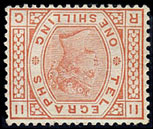
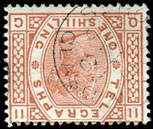
As described above, the watermark on this plate is more common sideways-inverted. We therefore show sideways-inverted examples as upright images, and sideways as inverted images. One vertical pair with sideways watermark is known.
Click the images to enlarge.
Issued Stamps — Plate 12
Plate 12 (current no. 595) was registered on 15 July 1880 in green.
It was re-registered on Crown paper on 13 Aug 1881 in brown-orange.
Scarcity #28 in mint telegraphs, #32 in used telegraphs.
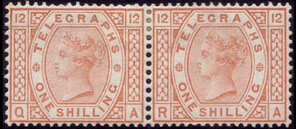
Mint stamps are rare, and mint multiples are rare with only one pair known to us.

Used stamps are rare, and use multiples are rare with two pairs, a strip of three, and a block of 15 (Langmead Collection) in our database. The earliest known used example is 10 Sept 1881 at Cardiff (Phillips Collection).
No inverted watermarks are known to us.
This telegraph form was sent from Garlieston, Newton Stewart on 11 Nov 1881. The contents have been erased but some words are still visible. The last line of the From Address is “Newton Stewart”, and the message is possibly “Could I — your — at Creetown Railway Station …”.
Click the image to enlarge.
